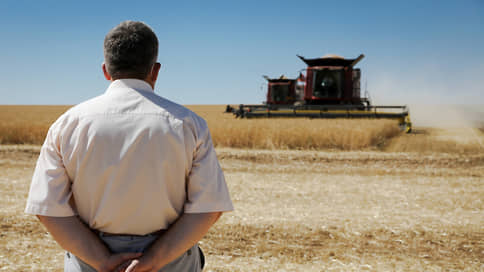The Ministry of Agriculture is going to combine stimulating and compensating subsidies for farmers from 2024
[ad_1]

The Ministry of Agriculture continues to improve the mechanisms of state support for farmers: the combination of compensatory and incentive subsidies planned for 2024, as follows from the latest statements of the ministry, should lead to the curtailment of the latter. In fact, the refusal to further stimulate the sector indicates the plans of the Ministry of Agriculture to preserve the existing structure of the agro-industrial complex and means a transition from extensive growth of the sector to intensive. The transformation of state aid to support the progressive development of the agricultural sector is explained, among other things, by the achievement of goals for self-sufficiency in agricultural products in the past agricultural year.
Starting next year, the Ministry of Agriculture is going to combine the incentive and compensatory subsidies provided to farmers, follows from the latest statements by Deputy Minister Elena Fastova. Summing up the results of the 2022/23 agricultural year that ended on June 30, the official noted that the indicators of the Food Security Doctrine have been achieved, the goals in some areas have even been “overfulfilled”, and therefore there is no need to further stimulate the industry.
Recall that since 2020, the “single” subsidy for farmers has been divided into compensatory and stimulating. The first, aimed at compensating for shortfalls in incomes of producers, included the provision of unrelated support in crop production and dairy cattle breeding, support for livestock breeding and agricultural insurance – de facto, we are talking about compensating agricultural producers for insufficient profitability in these sectors. The stimulating subsidy is aimed at the development by the regions of the priority sectors designated by the Ministry of Agriculture.
Initially, the ratio of compensatory and stimulating subsidies to support the industry during the pandemic was fixed at 58% / 42%, but it was assumed that gradually it would be possible to abandon compensatory subsidies. Some progress on this issue was achieved in 2023, when the volume of stimulating subsidies for the first time exceeded the volume of compensatory ones: 31.7 billion rubles. against 26.7 billion rubles. (for details, see “Kommersant” dated January 25).
However, over the past year, the position of the ministry has obviously changed: according to Elena Fastova, the tasks of the authorities have been reduced to preserving and supporting production, rather than stimulating it. From the statements of the Ministry of Agriculture, it is not entirely clear what the new subsidy will be and under what conditions it will be provided. However, apparently, the improvement of state support mechanisms will not cause a reduction in its volume – that is, a little more than 60 billion rubles. per year will be allocated to support less profitable producers (de facto at the expense of more profitable ones) and actually maintain the structure of the sector in its current state. To a large extent, the desire of the authorities to refocus on this kind of support is explained by the relatively stable development of the industry in recent years, despite sanctions and other external restrictions. Apparently, the statements of the ministry should be taken as the end of a period of extensive growth in the Russian agro-industrial complex, which lasted from the late 2000s and intensified after Russian counter-sanctions in 2014 (“ban on jamon and parmesan”). During this period, the agricultural sector has become one of the few import substitution projects – and its goals have been achieved.
Thus, for the third year in a row, the Russian Federation retains the status of a net exporter of agricultural products: in 2022, the export of agricultural products again exceeded imports, the trade balance amounted to $5.5 billion (in 2021 – $2.8 billion). At the same time, food security indicators, as Ms. Fastova stated, were achieved. According to the results of the agricultural year 2022/23, the main goods for the domestic and foreign markets – grain and vegetable oil – were provided by the Russian Federation by more than 185% (with the targets in the Food Safety Doctrine of 95% and 85%, respectively). We note, however, that overproduction of grains, with export prospects remaining unclear for most of the year, put serious pressure on domestic prices (for more details, see Kommersant of March 24 and April 20). Domestic farmers cover 153% of the needs of the domestic market in fish and fish products (the goal is 80%). In addition, over the past two seasons, the Russian Federation has achieved full self-sufficiency in sugar and meat – 103% and 101%, respectively.
One of the few goods for which the indicators stated in the Doctrine have not yet been achieved is milk: the self-sufficiency of which is just over 85% against the goal of 90%. It will be possible to complete the task, according to the estimates of specialized communities, within a four-year horizon. It should be noted that in this regard, a wide range of assistance measures remains for milk producers, which the planned changes will not affect in any way.
The transformation of approaches to the provision of state aid will not affect other general sector support programs aimed at ensuring its systemic growth. So, state programs for the integrated development of rural areas are still important for the overall development of the agro-industrial complex and its staffing (59.9 billion rubles were allocated for it in 2023, comparable to the amount of subsidies), there is also a program for the effective involvement of agricultural land in the turnover ( 38.4 billion rubles). Separate programs are being implemented to solve the problems of import substitution – among them is grant support for those implementing scientific and technical projects for the development of the domestic seed base. In addition, the authorities are still concerned about blocking the supply of agricultural machinery and spare parts to the Russian Federation, and therefore continue to support “long-term” projects to develop their production in Russia.
[ad_2]
Source link






